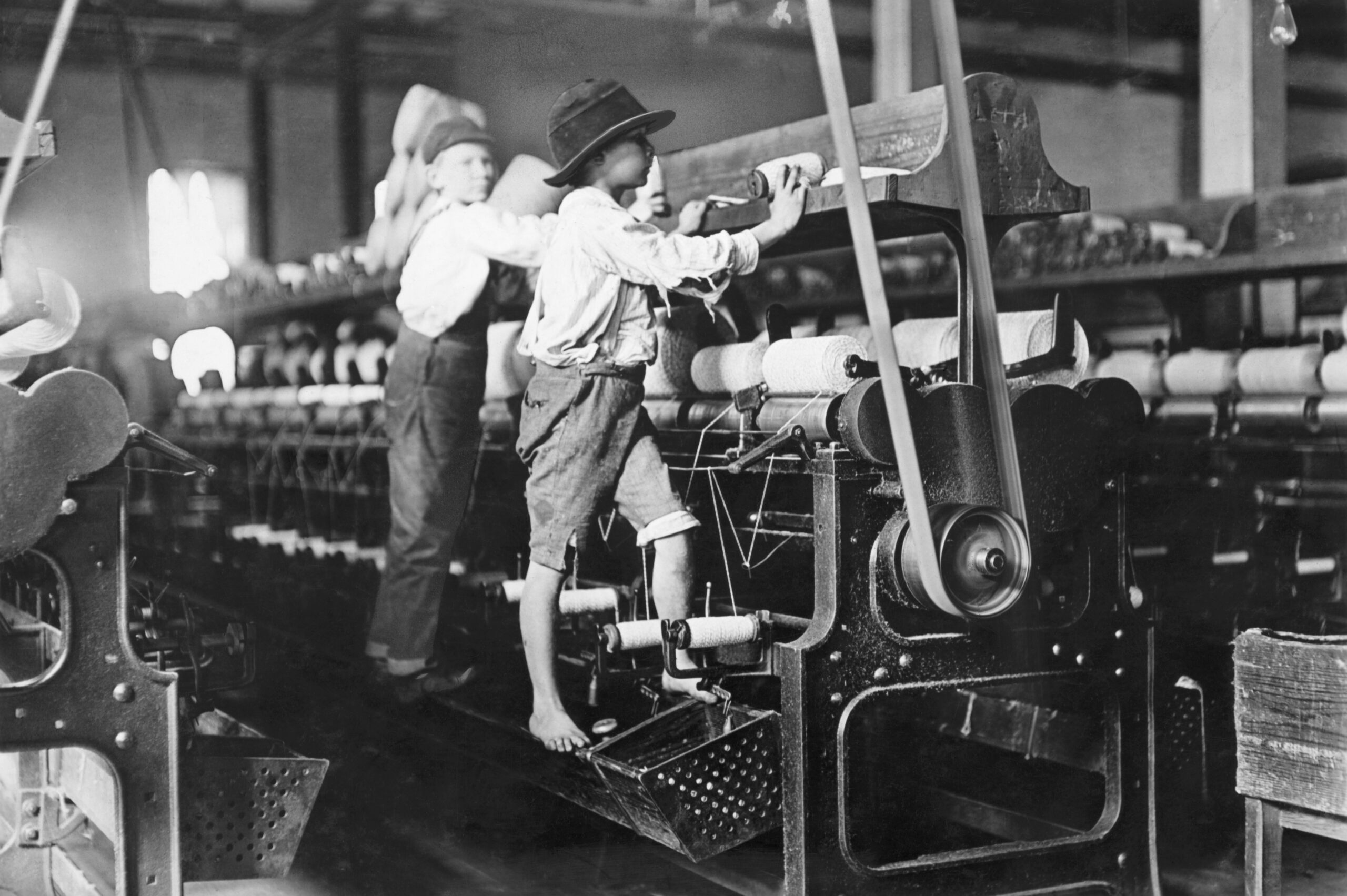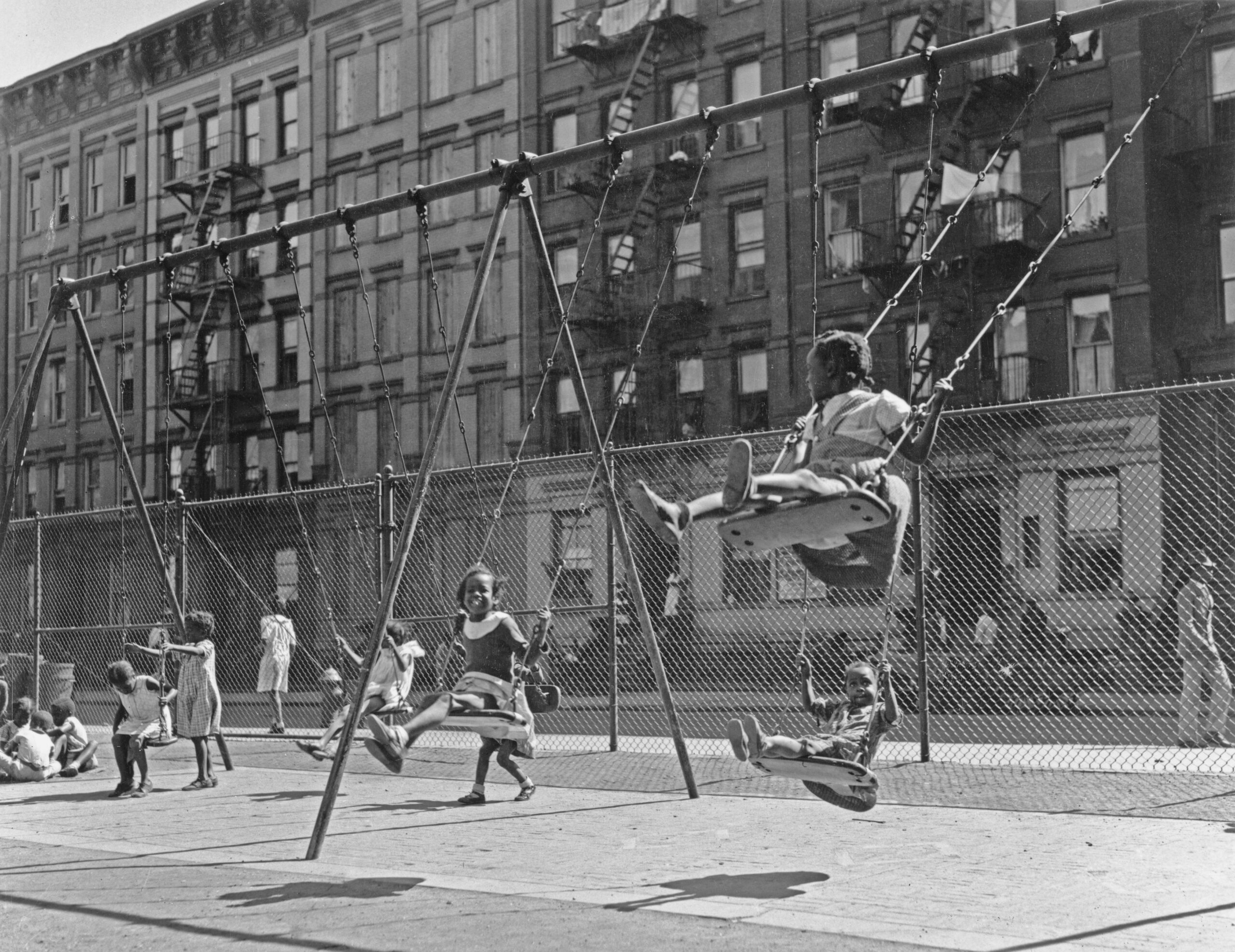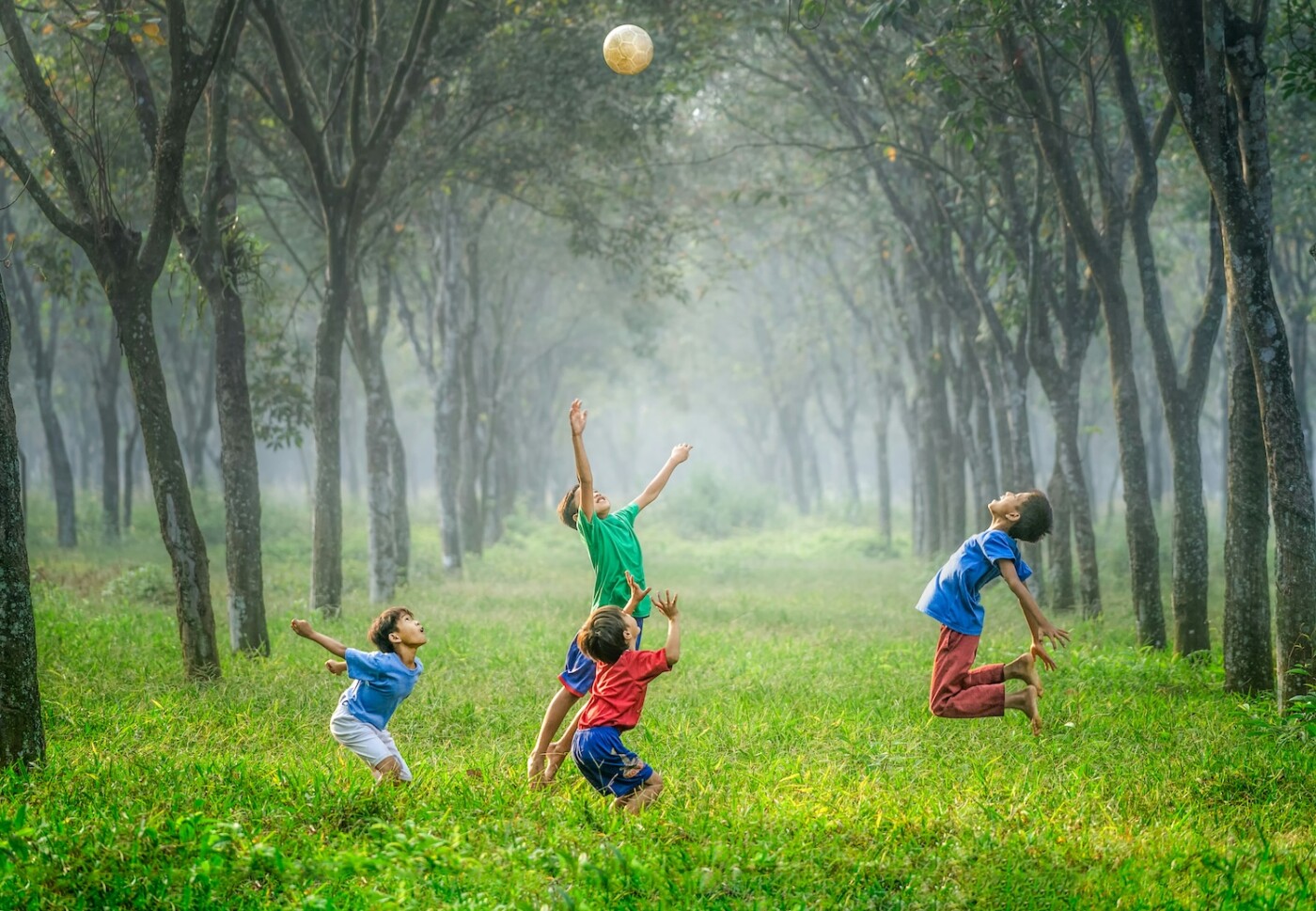Kids are born to play. And when Peter Gray was young, adults made sure that’s exactly what they did.
Gray grew up in the 1950s, when children were expected to spend long hours between school and dinner unsupervised. Afternoon games of Double Dutch and Red Rover became a hallmark memory for Baby Boomers, but they were only a few generations removed from the advent of Progressive labor laws that established minimum working ages and redefined childhood in America as a protected phase of life.
Surveying the restrictions on children’s freedom today, he believes we’ve spent much of the last few decades moving backwards. “We’re basically back in the age of child labor again,” Gray said. “But it’s labor we’re imposing because we believe it’s good for children.”
A research psychologist at Boston College, Gray has spent his career studying the effects of free, unstructured play on young people — and what happens when it is edged out by activities overseen by adults, especially school. Abundant data suggest that children now spend much less time outside making friends and inventing games, and much more at home, doing homework and absorbing media under the watch of their parents.
The results have been catastrophic for their development and wellbeing, he has found. In an analysis published last September in the Journal of Pediatrics, Gray and several co-authors argue that the contraction of kids’ independent activity since the 1960s has made them markedly less resilient and triggered a well-documented rise in mental health disorders like depression and anxiety. He advances many of the same claims in a regularly updated Substack on play and happiness, where he critiques everything from Little League sports to the curtailment of school lunch periods.
Notable is the theory of social harm that Gray dismisses out of hand: the supposedly pernicious effects of smartphones and social media, which have increasingly come under scrutiny as experts complain that they monopolize kids’ time and attention. While some of the same critics share his views on the importance of play, he calls the data implicating addictive technology unpersuasive.
Indeed, he argues, warnings about excessive screen time are worse than wrong — they’re a deflection from the ways in which adults have re-engineered the world around kids to exclude and control them.
“It’s really the first time in human history that children have not been free to do a lot of independent things,” Gray said in a conversation with The 74’s Kevin Mahnken. “Children are designed to grow up with independence, so over the last few decades, we’ve been doing things in a way that’s historically abnormal.”
This interview has been lightly edited for clarity.
The 74: What is the relationship between unsupervised play and mental health, both in childhood and later life?
Peter Gray: There are certain obvious ways in which play is essential for mental health. First, play makes kids happy, and you really don’t have to do research to know that. If you take play away from kids, they’re a lot less happy, and the lack of happiness is a big part of depression. About this part there should be no mystery.
But play does more than make children immediately happy. It is also the means by which they acquire life skills and learn to make friends. It’s the means by which they learn to direct their own activities. In the process of doing that, they have to learn how to negotiate with their playmates, deal with disagreements and minor bullying, and so forth. If we’re supervising children all the time and not allowing them opportunities to solve their own problems, they grow up without the kinds of character traits and skills needed to deal with the bumps in the road of life.
So that’s the general hypothesis. But what not everybody knows is that, over several decades, there has been a continuous decline in children’s opportunities to play freely. Over the same decades, there has also been an increase in anxiety, depression, and suicide among children and adolescents. That doesn’t prove that one thing is caused by the other, but even from a theoretical position, it seems fairly clear that there’s a cause-effect relationship here: Play makes children happy and resilient, we’ve been taking play away from children, and, lo and behold, children are becoming less happy and psychologically resilient.
What is the evidence that children’s play has declined in recent years? Is it clear in other countries as well as the United States?
It’s declined in the U.S. and some other countries, but it’s not universal by any means. Some of the most interesting evidence comes from the sociologist Markella Rutherford, who wrote a book called Adult Supervision Required. Her approach was to analyze articles and letters about children in parenting magazines — Good Housekeeping, for example, has been published almost 150 years — and look at the way people thought about play. What she found was that, through the first half of the 20th century, there was a lot of emphasis on independence. It was recommended that kids walk to their kindergartens and go to the grocery store when milk was running low, and they should be encouraged if they were afraid to do those things.
The advice from those sources was less likely to advocate for independence in the 1960s, and by the ’80s, things were changing quite dramatically. The very things that were previously recognized as important for kids to do independently were now seen as dangerous, and there was much more precaution about danger.
“Play makes children happy and resilient; we’ve been taking play away from children.”
There is also data showing that lots of students used to walk or bicycle to school until the 1980s, when that declined sharply. Now we even have situations where people think that letting an eight-year-old walk to school is negligent, so parents send their children out and then get a call from police.
This has all been a social experiment that obviously failed. It’s really the first time in human history that children have not been free to do a lot of independent things. Children are designed to grow up with independence, so over the last few decades, we’ve been doing things in a way that’s historically abnormal.
What would you say is normal in the history of human societies? Is it really true that kids have always enjoyed the freedoms of youth?
As part of my research, I have surveyed anthropologists who study hunter-gatherer cultures in seven different cultures across three continents. Even through the 20th century, there were still quite a number of people living that way.
Every one of the researchers told me that children were free to play and explore essentially all the time. Very little work, if any, was expected even of teenagers, and you were basically seen as a child until you had children of your own. Children explored, they tended to play at the things important to their cultures, the older kids looked after the younger ones, and the adults understood that this is how kids learn. In my mind, that’s the biologically natural way that children grew up across history. For 99 percent of our history, we were hunter-gatherers.
The anthropologist David Lancy, who co-authored our article about mental health and the decline in play, is one of the big experts on children around the world. He has found that certain cultures, more so than hunter-gatherers, do expect some work from children. But that work is independent activity; there isn’t an adult running alongside them and telling them what to do. If it’s a farming culture, kids help with the farming, or they haul and chop wood. And even in the context of those chores, they’re doing it with other kids, and there is play as well. The idea of parents following children around and micromanaging their activities is just not something that happens in many cultures.
You refer to historian Howard Chudacoff’s idea that the early 20th century was a “golden age of unstructured play.” But what about the 19th century, when lots of very young kids had to work outside of their homes? I’ve read enough Dickens to know that wasn’t a terrific time to be a kid.
You bring up a terrible time in history, the Industrial Age, where many children worked in factories amid tremendous poverty. But although it’s not a life we would want for our kids, I think those Dickens characters do play. In a Dickens novel, they have to be incredibly independent — to pick pockets, God forbid — and take risks and collaborate with other kids to figure out how to survive. So it’s a very different situation than what we have now, even if it is not the ideal.
The way I’d put it is that our children are now less free to engage in independent activities than they have ever been, except in times of childhood slavery and the sort of sweatshop work that was fairly common in this country until about a century ago. The golden age of play in America came from our decision to end intensive labor for children and make them, in a way, more like children in hunter-gatherer cultures; they could explore and play in age-mixed groups around their neighborhoods. It was a sort of return to what a normal childhood looks like.
But Chudacoff, who wrote a great history of play in America, points out that we gradually took those freedoms away. When you count school and homework, kids are basically doing the equivalent of a full-time job. We’re basically back in the age of child labor again, but this time, it’s labor we’re imposing because we believe it’s good for children.

Don’t you think a lot of parents, while perhaps agreeing that kids are over-scheduled these days, would also point out that they really are much more likely to survive the risks of childhood and grow into adulthood in 2024 than in 1924? Maybe that’s a price we should be willing to pay.
Well, we’ve got vaccines and modern medicine now, and we’ve cleaned up the environment to a degree. We have much less desperate poverty than we once did, so that helps as well. Those are the main reasons why more children grow into adulthood.
Here’s another way of looking at it. Despite the fact that the first half of the 20th century was not an easy time — you’ve got world wars, the Great Depression, a lot of other problems — children seem to have been much happier then than they are now. We don’t have perfect evidence for all these outcomes, but we know the suicide rate for kids and teenagers was way lower then than it is now. Life was pretty rough, but they didn’t seem to suffer then as they do now.
So what changed?
Between 1950 and 1990, school added more hours. By 1990, the school year was five weeks longer than it had been, and the school day was generally longer. You started seeing homework for elementary schoolers, who mostly hadn’t had it before. There was far less competition and worrying about grades back then. The combined result is that we’ve gradually increased what I call the “weight” of school, and the amount of time children spend on it.
We also began to believe that children were better off playing adult-directed sports than going out and making up their own games. We started Little League and all these other sports, and parents started thinking, “Better to get my kid into that than just have them go out and play.” But when you’re just making up your own games, as I did in the 1950s, you learn a lot more than you do when there’s an adult to take charge. You’re learning to create rules and keep everybody happy — particularly the people on the other team, who will go home if they’re not happy. All that is lost in a more organized setting. Little League is a great place to learn to bunt, or slide into second base, or throw a curveball, but it’s not a great place to learn anything else.
Television would be another example. My family got a TV in 1954 or so, right when the Mickey Mouse Club started up. Before that, my friends and I would hang out after school or go fishing. But after, a lot of us would go home and watch whatever was on. It drew kids indoors, where they weren’t playing or exploring.

It seems like parents have become more worried about their kids’ safety as well.
A couple things occurred in the 1980s that played a big role in that.
In 1979 and 1981, there were two highly publicized cases of young boys being kidnapped and murdered. Of course, those cases made news precisely because they were so rare. But they had a huge effect, and I still remember seeing pictures of kids on the sides of milk cartons in those years. As it turns out, the vast majority of those cases were runaways, and when kids are snatched away, it’s almost never by strangers. But the term “stranger danger” came into use, and when surveys asked parents why they wouldn’t send their kids out, they would cite fear of strangers.
We talk a lot about helicopter parenting, but I don’t blame parents for this. The society has evolved in a way that changed cultural norms, and parents who try to resist those norms find it very hard to do so.
I notice you tallied a huge list of factors without mentioning the ascendant thesis for youth behavior and mental health problems: the emergence of smartphones and social media. Do you believe they’ve been overhyped as an explanation?
I’ve looked at the papers in this area, especially the review papers. And if you want to dig out the research supporting the theory that technology is the main driver of our youth mental health problems, you can make a pretty compelling case. But you’d be cherry-picking.
There are so many studies trying to find a link between social media use and anxieties in girls, boys, people of different ages. People have tried to find a simple correlation: Are people who use social media a lot also more likely to be depressed? Some studies show a positive correlation with measures of anxiety, and some studies show a negative correlation. In a lot of studies, it kind of washes out. To me, there’s no really compelling evidence based on the correlational data.
In something of an acknowledgment of this, there’s been a search for other kinds of evidence. People point to experiments where people who say they’re anxious will agree to stop using social media for a period of time. They rate their anxiety levels at the beginning and the end, and what is often found is that those who stopped social media say they’re a bit less anxious.
But there are two things wrong with these kinds of studies that anyone involved with research should know. The first is that when subjects involved in an experiment know what the purpose of that experiment is, most of them will be motivated to confirm the hypothesis. In this experiment, the hypothesis was very clear and couldn’t have been hidden. Countless social-psychological studies show that when subjects in an experiment believe something is going to happen, they make it happen. This is called the demand effect.
“If you want to dig out the research supporting the theory that technology is the main driver of our youth mental health problems, you can make a pretty compelling case. But you’d be cherry-picking.”
Second is the placebo effect. One of the reasons drug companies have such difficulty getting drugs approved for anxiety or depression is that these are extraordinarily subjective conditions. How anxious does a person feel? Well, if you believe you’re doing something good for you — like taking a drug — you’re quite likely to feel less anxious. In this case, college kids had undoubtedly heard that social media makes people anxious, and as part of their desire to be part of the experiment, they undoubtedly felt that it would be a good way to reduce their anxiety.
The proponents of the social media theory have also found a few other countries where anxiety and depression increased over the same period that kids started using smartphones and social media. Apparently this is true in the U.K., Australia and a few other places. But I’ve looked at data from the European Union, who are not deprived of technology or the internet, and if you take all the countries of the EU together, there has not been an increase in anxiety, depression, or suicide over the same years.
Taken together, I think this is just not compelling evidence.

But the more time kids spend on devices, the less they spend in the kind of unstructured, in-person play that you argue is crucial. Isn’t this just the modern equivalent of the television example you mentioned earlier?
There’s a difference between television and what kids today are using. The technology they’re using is far more interactive than TV, and a lot of it is essentially play. They’re not just doing social media, they’re communicating with one another.
There was a systematic study done near the beginning of the social media stage of teen life. The authors surveyed teens across the country about why they spent so much time on social media instead of getting together in person. Across the country, teen after teen said, “I’d love to get together, but I’m not allowed to go out.” Or: “My friend isn’t allowed to go out. This is the only way we can communicate.” That was already true in the early 2010s.
“I don’t think they’re on social media instead of getting together; they’re on social media because they can’t get together.”
Teens, especially, need to hang out together away from adults. Thinking about when my son was a teenager, you’d see gangs of teens hanging out in malls. That’s what teens need to do! They need to get away from adults, to talk to one another in ways they don’t want their parents to hear. But we’ve created a world where they can’t really do that, except by way of the internet. In other words, I don’t think they’re on social media instead of getting together; they’re on social media because they can’t get together.
I will admit to being concerned that we’re raising kids who don’t even know about the possibilities for getting together because no one else is doing it. By this point, even some young parents didn’t have much chance themselves to socialize independently when they were kids, so they grew up thinking the only way to communicate with your friends is on a smartphone.
Do you think that can be even partially reversed?
I’m involved with a group called Let Grow, and we help organize play clubs at schools. It’s an hour of mixed-age free play for all the kids in an elementary school. Everyone plays at once. There are lots of different ways of playing, but there are two rules: no hurting anybody, and no phones. It’s been extraordinarily successful, as are summer camps when phones are removed. In places like these, where kids can interact with one another freely, it’s not a bad idea to ban phones.
Instead of speculating about what makes kids anxious, you can look at surveys that ask them directly about what makes them anxious. The great majority say school, and nothing else comes close. The American Psychological Association did a study in 2013 that surveyed teens about their anxiety levels, which were very high. But they were much higher during the school year than the summer, and when asked what the source of their anxiety was, something like 83 percent listed school. The thing that came in second, among high schoolers, was fear about getting into a good college and having a decent future.
The reality is, we’ve frightened children by imposing this pressure and telling them that they’ve got to perform so well academically or else their life will be worthless.

You’ve written a bit about the changing structure of the school day. Can you go into more detail about how you believe the experience of school has evolved in a way that’s unhealthy to kids’ development and wellbeing?
In one of my recent Substack threads, I asked my readers when they attended K–12 schools and how long the lunch period was when they attended. I believe historical data would confirm this, but just based on the information I collected, lunchtime ran about 60 minutes from the 1950s to the 1980s. Then it suddenly went down, to around 35 minutes in the ’90s. Nowadays, the average that I’m seeing is about 30 minutes, though it appears there are schools that only provide 20 minutes.
Twenty minutes isn’t a lot of time to wash your hands, stand in line for food, find a seat, and eat. Lunch hour used to be a time to hang out with friends, and now it’s not even a time to eat your lunch. Studies show that a lot of the federally mandated meals we provide to students are getting thrown out because kids don’t have time to eat them. Would we, as adults, stand for it if we were being treated this way?
“We’ve frightened children by imposing this pressure and telling them that they’ve got to perform so well academically or else their life will be worthless.”
In some schools, recess has been cut out entirely, and in many, it’s only 15 minutes long. This certainly wasn’t a rule, but I remember having a half-hour of recess in the morning and afternoon in the fifth and sixth grade, along with a whole hour for lunch. So of our six hours of school each day, two were spent playing or socializing in whatever way we wanted. It’s now so strictly controlled in some schools, it’s really wrong to call it play.
In many schools, we have also taken away the things that were thought of as fun because of the concern over standardized test scores. Music and art classes have often been reduced so that more time could be devoted to subjects that are measured by the tests. It’s really time to evaluate the effects of No Child Left Behind and Common Core not just on test scores, but also on children’s emotions. I think the whole push around social media and smartphones is a distraction from the real problem.
What is your advice for families trying to swim against these currents? I know you’re working with people like Lenore Skenazy to develop strategies for fostering more independence and resilience in kids, but so many parents complain that their communities just aren’t that kid-friendly.
It’s true that lots of people don’t feel they can, like parents in the past, just send their kids out to play. Among other reasons, there aren’t as many kids to play with.
Still, one of the things I advise parents is to get together with others in their neighborhood — granted, this works more for little kids than teens — and talk to them about the importance of real, physical play. Every Saturday afternoon, and maybe certain hours each weekday, everyone in the neighborhood should send their kids outdoors and not intervene unless it’s absolutely necessary for safety. And you have to keep the phones at home because many of the kids never had the opportunity to learn how to play without them.
If there’s a PTA or some venue where you can influence your school, get the school to start after-school or before-school play clubs through Let Grow. It’s still a small minority of schools doing this, but I’d like to see it at every school. It’s safe because there are adults there, but they’re trained not to intervene while kids play. It’s working beautifully where it’s being done.
And it’s possible to encourage this in other settings. More and more libraries are offering play opportunities, including even outdoor play. One in Austin hangs out a sign saying, “Joyful noise welcome!” They have kids playing inside and outside the library, and if adults bring kids, the librarians just let them know that play is for kids, and there’s a separate space for parents. Kids gather there, sometimes a hundred at once, from the ages of three or four to the early teen years. I would love to see more of that, and parents can simply go to their local library to ask about it.
There are lots of things that used to be much more common because American society isn’t as child-friendly as it used to be. In one of the towns I grew up in, there was a public park that essentially ran a free day camp all through the summer. A supervisor worked there who was probably just a teenager, and he would hand out equipment for games or crafts or whatever you wanted to do. It was free, and parents felt comfortable about their kids spending all day there because there was an adult around.
“I think it’s really time to evaluate the effects of No Child Left Behind and Common Core not just on test scores, but also on children’s emotions.”
We could do all this easily. In terms of budgets, the cost of it would be a drop in the bucket compared with what we spend on schools. Unfortunately, we’re not going back to a situation where parents can just send their kids out with, more or less, total freedom. But we might get to a place where they feel comfortable not being there while their kids are playing — if there is a responsible adult there who can contact them and who knows how to handle emergencies.
I believe we could get there if parents are willing to lobby for it.

